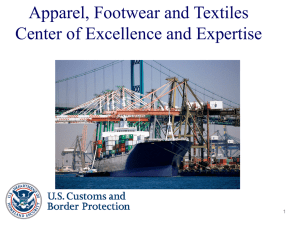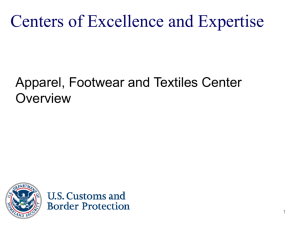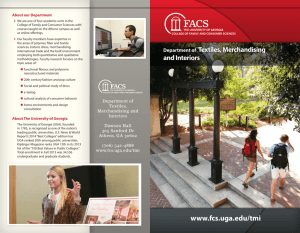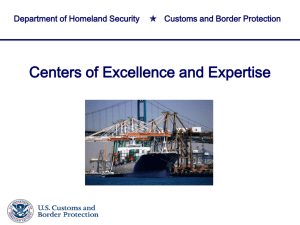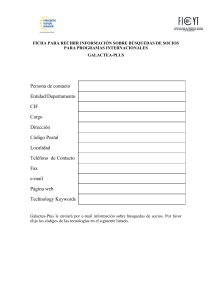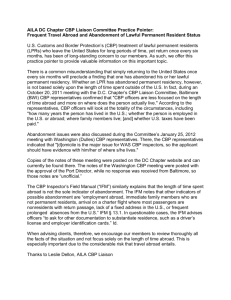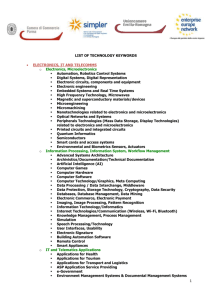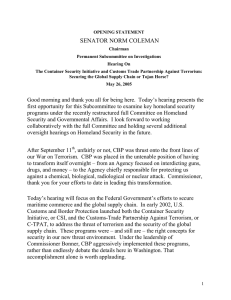Centers of Excellence & Expertise (CEE)
advertisement
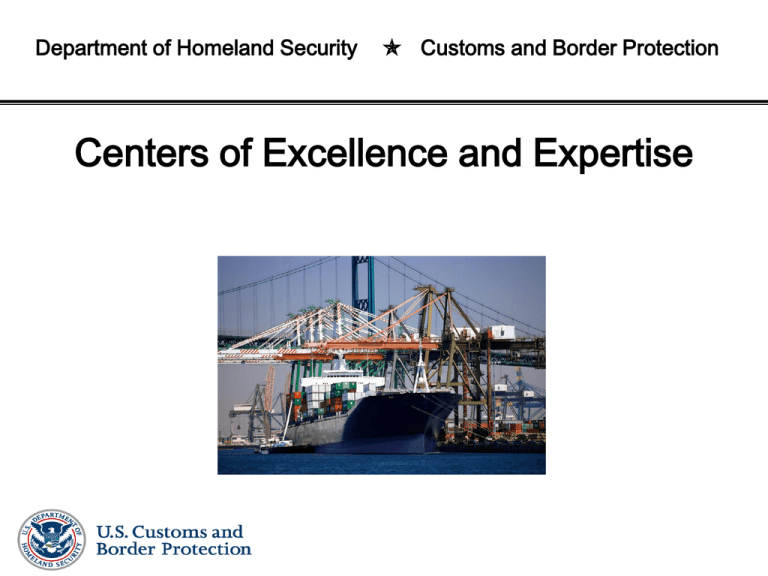
Department of Homeland Security Customs and Border Protection Centers of Excellence and Expertise What are Centers of Excellence and Expertise? Industry-focused and account-based points of virtual processing for post-release trade activities Aligned by 10 key industry sectors in strategic location CEE Consolidate existing expertise and build industry-specific education to authoritatively facilitate trade Provide national overview of participating accounts to identify areas for further facilitation or corrective action Serve as a resource to the broader trade community and to CBP’s U.S. government partners 2 Why Centers? • Objective: – Focus on industry-specific issues – Facilitation – Reduce transaction costs – Increase compliance – Increase uniformity of treatment • Past processing: – Company imports into 60 ports of entry – 60 ports conduct entry summary reviews • Centers – Company imports into 60 ports of entry – Single Center conducts entry summary reviews 3 CEE Strategic Vision and End State • Pre-arrival, arrival, and cargo release – Port Directors: arrival and manifest processing; release authority for narcotics, terrorism, agriculture, and other security risks • Centers will perform all trade processing post-release – Entry summary review/verification, liquidation, protest, reconciliation, drawback, liquidated damage and penalty initiation, commercial fraud case development, collaboration with HSI • Supply chain security – Centers will partner with Supply Chain Security Specialists in basic supply chain management • Policy analysis – Centers will provide subject-matter expertise to HQ policymakers on decisions affecting the Centers’ industry; ensure policy is executed uniformly What are the benefits? Action Eliminates unnecessary duplicative work from compliant imports Ports of Entry focus shifts to high-risk shipments Centralized office for trade inquiries Cross-functional expertise Benefits Fewer cargo delays Reduced costs Greater predictability More complex enforcement work Improved enforcement results: o Increased import safety o Increased revenue protection o Reduced economic loss to IPR theft Improved relationship with CBP as small/medium-sized importers have a streamlined inquiry process for resolving concerns Increased uniformity and transparency for the trade Environment for in-depth learning to increase CBP expertise and therefore enforcement 5 Background: Status (1/10/14) CurrentCurrent Status (05/22/14) Center 6 Accounts Electronics 52 Pharmaceuticals, Health & Chemicals 31 Apparel, Footwear & Textiles 26 Consumer Products & Mass Merchandising 18 Agriculture & Prepared Products 17 Petroleum, Natural Gas, & Minerals 15 Automotive & Aerospace 14 Base Metals 9 Machinery 9 Industrial & Manufacturing Materials 7 Background: End EndStatus Status Estimated Importers of Record by Center once fully implemented Center IORs Consumer Products & Mass Merchandising 79,500 Machinery 53,500 Apparel, Footwear & Textiles 34,400 Industrial & Manufacturing Materials 32,300 Agriculture & Prepared Products 29,000 Electronics 25,700 Automotive & Aerospace 18,800 Pharmaceuticals, Health & Chemicals 15,800 Base Metals 15,200 Petroleum, Natural Gas, & Minerals 7 2,000 Centers of Excellence and Expertise Call (866) 295-7624 to connect with your Center of interest Industrial & Manufacturing Materials Automotive & Aerospace Base Metals Apparel, Footwear & Textiles Electronics Pharmaceuticals, Health & Chemicals Consumer Products & Mass Merchandising Machinery Petroleum, Natural Gas & Minerals Agriculture & Prepared Products CEE mailbox CEE@cbp.dhs.gov
